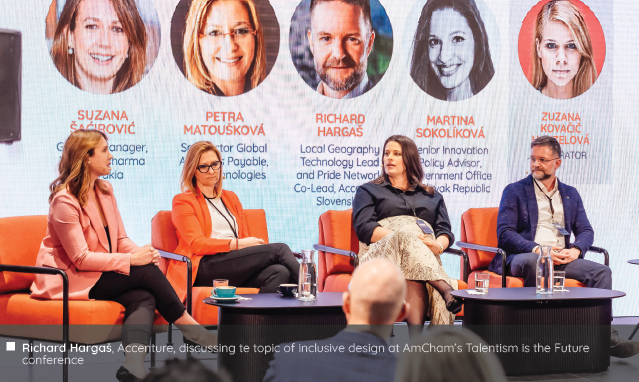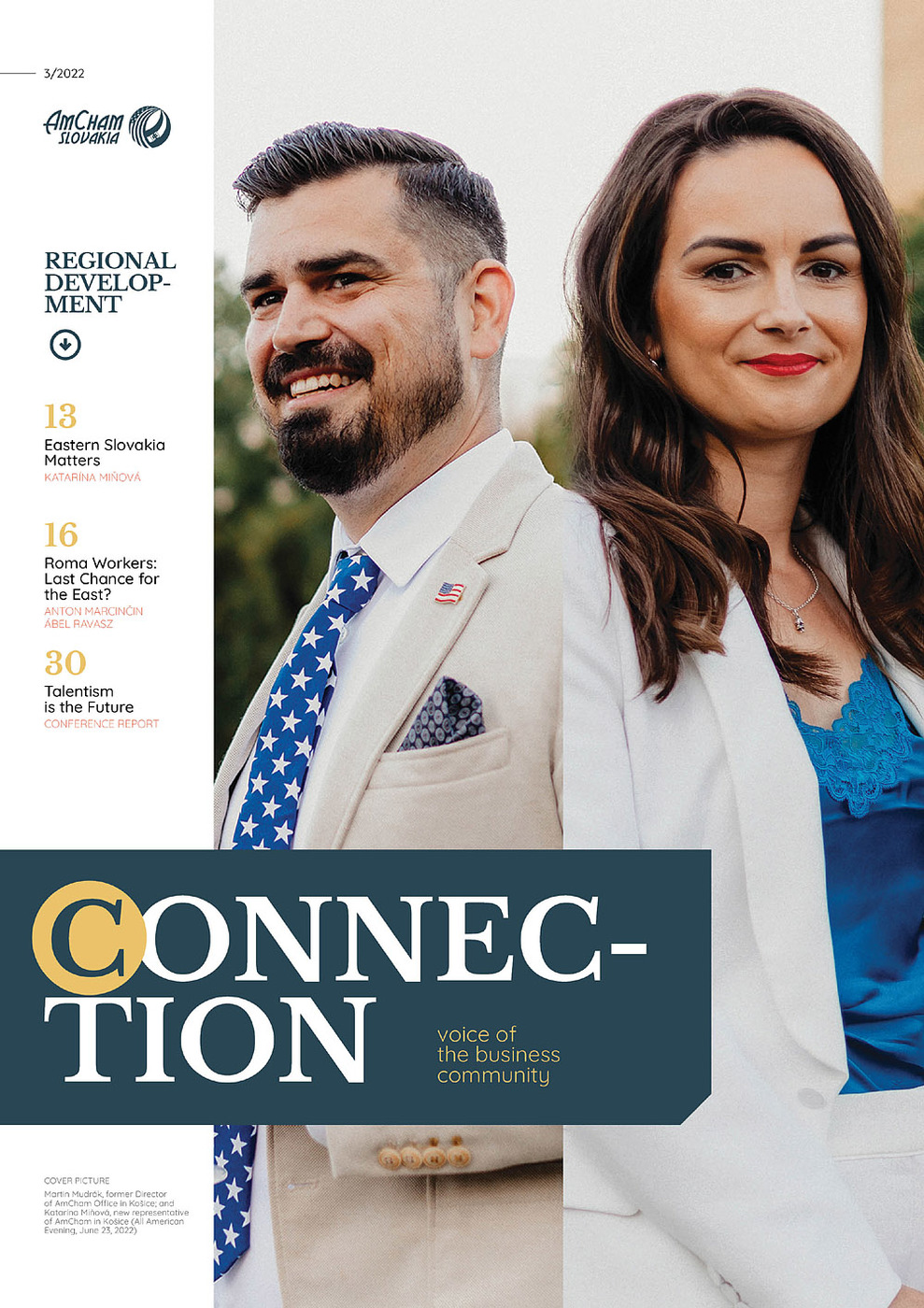There are more than eight billion unique individuals on this planet and each one can bring new perspectives, solutions and ideas into society and communities. At Accenture, we believe that both diversity and inclusion can drive innovation and thus bring smart solutions for our clients. This is also valid for C-level executives and Board members who are expected to help to create and sustain a culture of inclusion where everyone can advance and thrive. Our areas of focus include gender, ethnicity, LGBTIQA+, religion, persons with disabilities, age and cross-cultural diversity.
According to our global report from 2020, more than half of LGBTIQA+ employees believe their gender identity, or their sexual orientation has slowed their progress at work. People can be creative only in a safe and harm-free environment where they are able to express their true selves. I joined Accenture in Bratislava when the company only had 32 employees. From the first moments I felt secure and never experienced any homophobic behavior against me or my other colleagues. After more than two decades at Accenture, I am glad to confirm that the company keeps on its promise of creating an inclusive workplace with a strict anti-discrimination policy including a mechanism for people to safely report any violations.
Another effort is to equalize employee benefits beyond what is currently offered by the state. In the area of family benefits, we aim to provide identical benefits to opposite-sex couples as well as same-sex couples such as a children’s play area, a child allowance, even if you are not the biological parent.  Accenture reflects its diversity even in the technology that it creates. Our survey showed that 56 % of Gen Z’ers know someone who uses gender-neutral pronouns. To address this, Accenture Labs partnered with CereProc to develop a non-binary text-to-speech voice called Sam. Although we are proud of this project, it is just the beginning.
Accenture reflects its diversity even in the technology that it creates. Our survey showed that 56 % of Gen Z’ers know someone who uses gender-neutral pronouns. To address this, Accenture Labs partnered with CereProc to develop a non-binary text-to-speech voice called Sam. Although we are proud of this project, it is just the beginning.
In our commitment to gender equality, we want to achieve a gender-balanced workforce by 2025 with women making up 30 % of our managing directors globally. How? We carried out research that confirmed our hypothesis – inclusive culture is an important factor for retaining women in tech roles. To do that, companies should set targets for diversity in the leadership team, while providing women with targeted workplace support such as mentors. Moreover, we must make sure both women and men take parental leave and senior leaders should keep in mind that planning events during working hours ensures that employees with after-work responsibilities can attend.
However, the inclusive workplace is just a part of the puzzle. It is equally important to focus on education in the long term. To make it brief, tech needs women and new talents in general. We support women by organizing workshops where they can gain and develop digital skills, including the basics of programming. In addition, we are determined to help via projects such as the Digital Skills platform or by cooperating with NGO partners such as Aj ty v IT, Green Fox Academy or IT v Kurze.
While the company policies and efforts can contribute to a welcoming and diverse environment, everyone should be ready to participate in building a culture of inclusion. As I mentioned earlier, bold leadership, comprehensive action and an empowering workplace are the pillars enabling us to act now, drive growth and inspire others. By treating our inclusion and diversity goals as seriously as other business agendas, we are committing to make them equally important as any other strategic priorities.

Richard Hargaš, Local Geography Technology Lead and Pride Network Co-Lead, Accenture Slovakia



Follow us